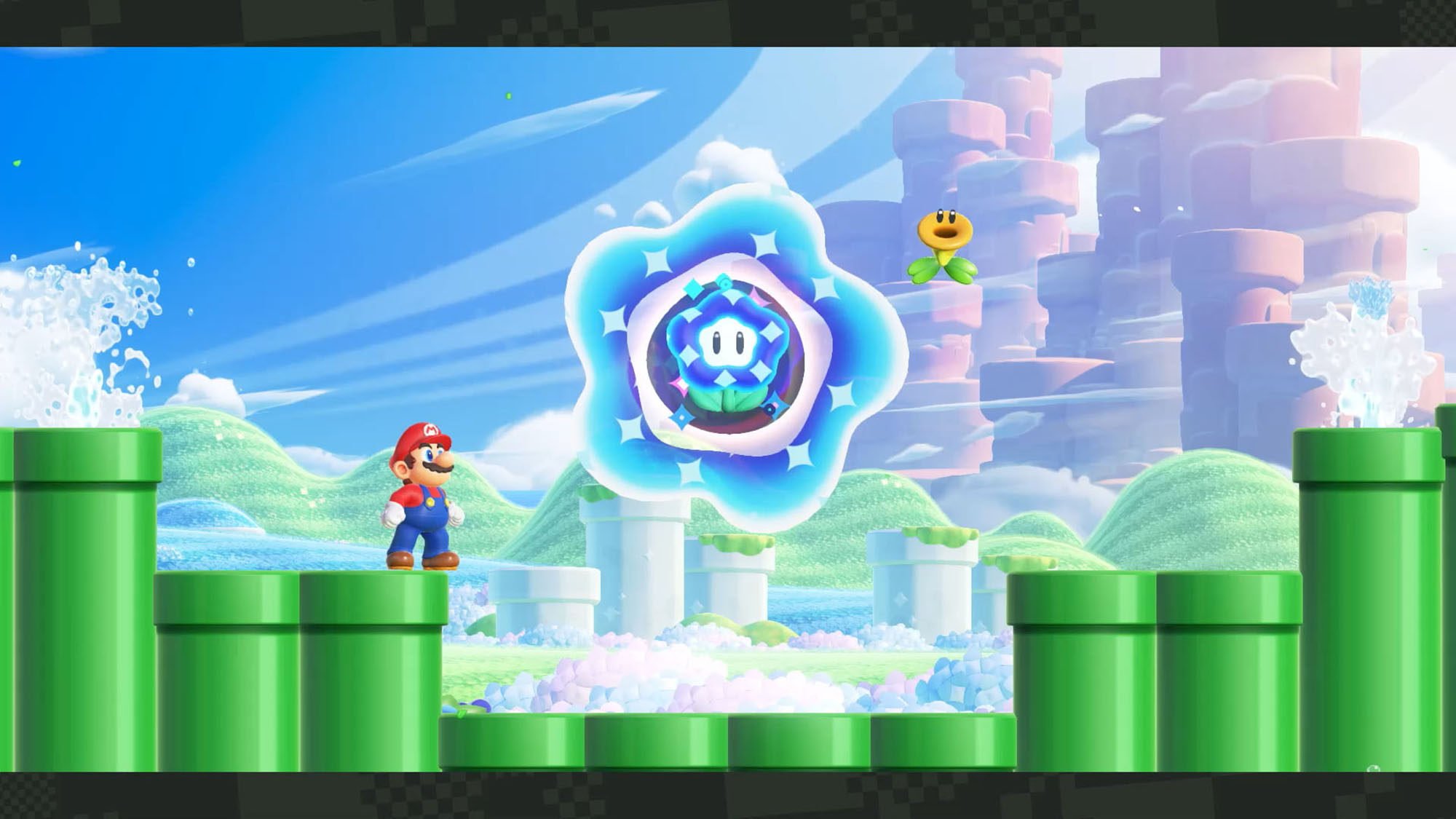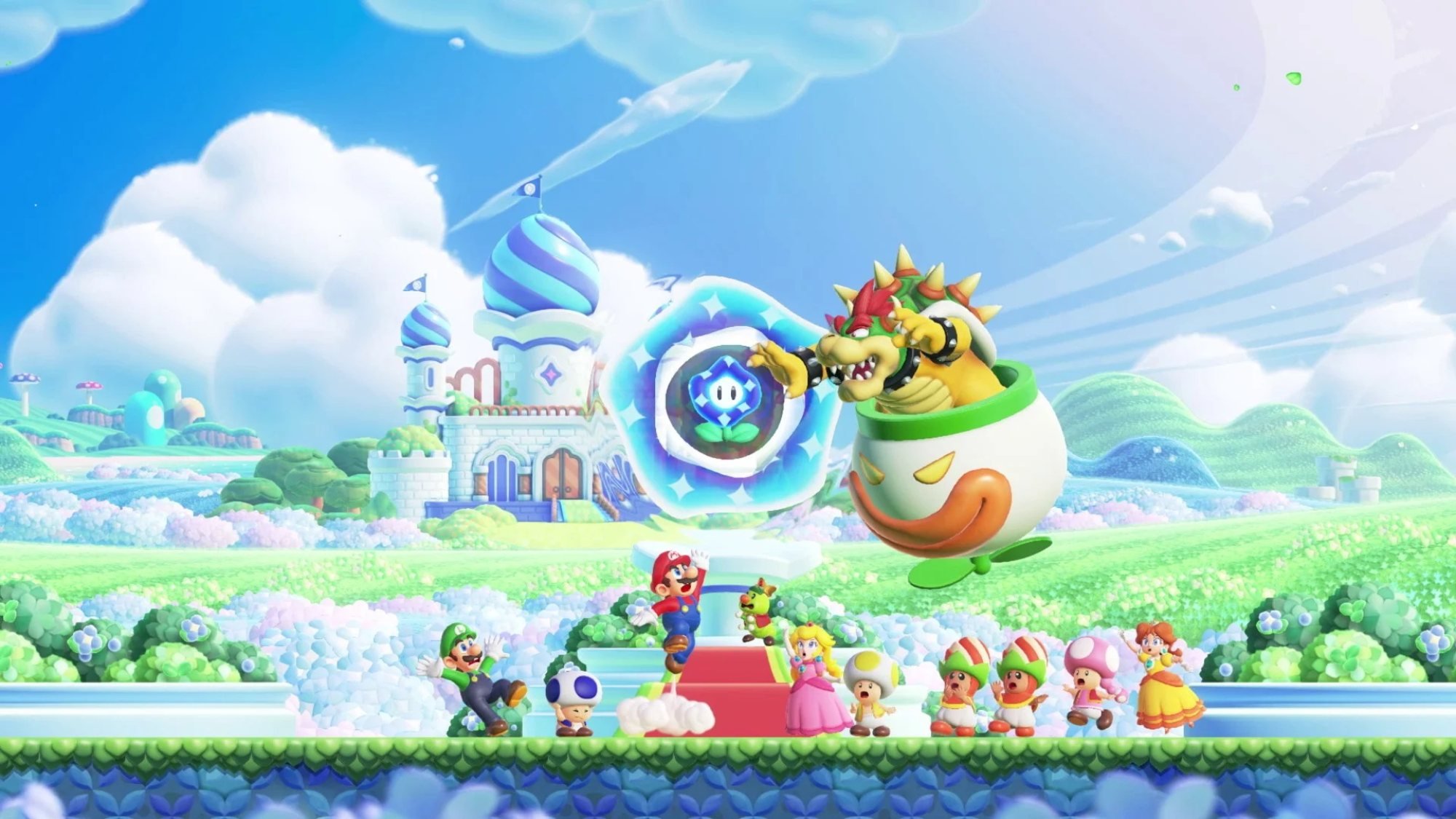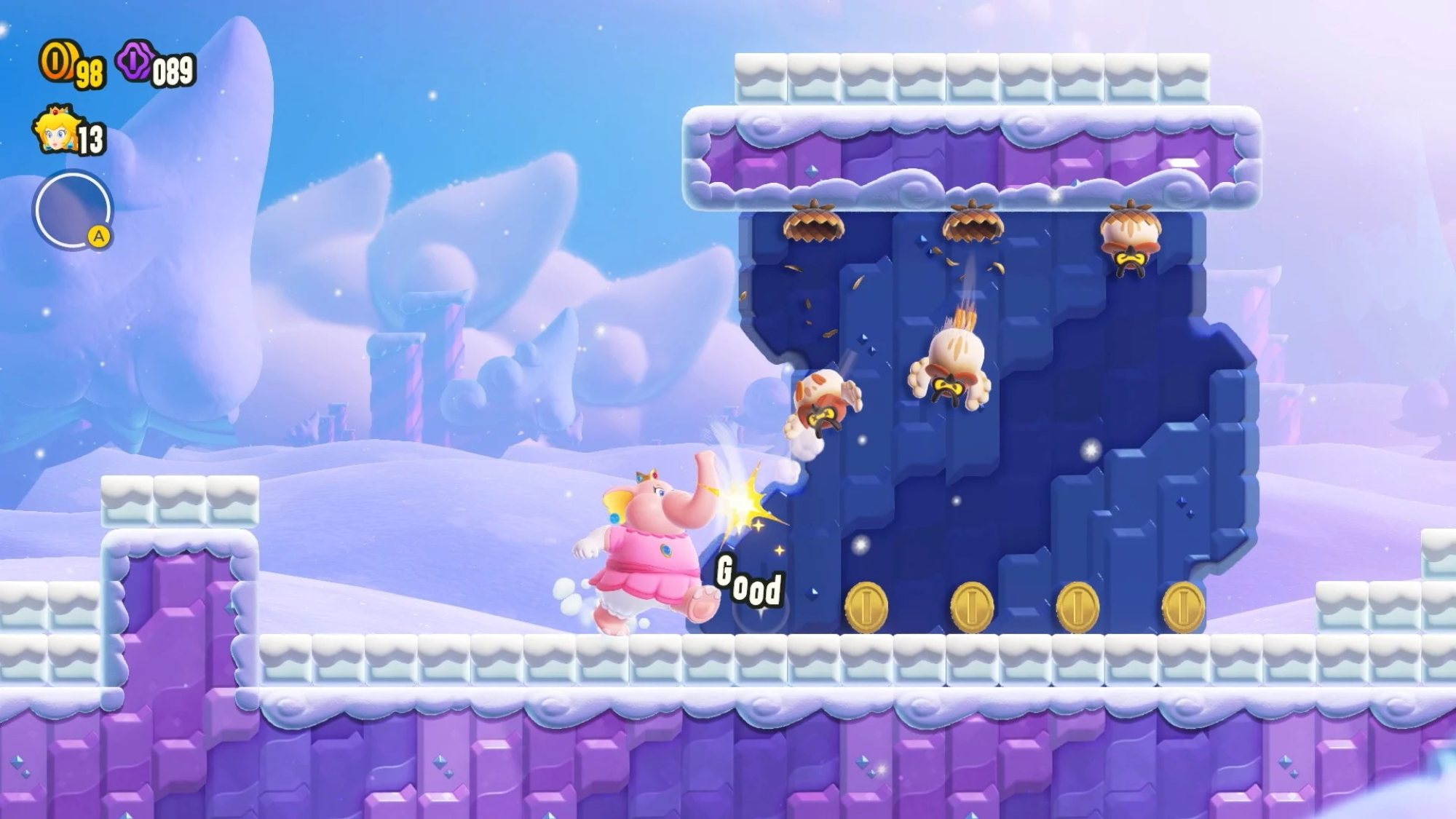
Review | Super Mario Bros. Wonder review: new Nintendo Switch game is a love letter to the unexpected
- The first traditional side-scrolling Super Mario Bros. game in 11 years, Super Mario Bros. Wonder introduces ‘Wonder Flowers’ that turn each world on its head
- The game is less about challenges and more about life – why we explore, how we stay optimistic and, most importantly, how we can find awe in unexpected places
Early on in Super Mario Bros. Wonder, the new video game from Nintendo, the nemesis Bowser, up to no good in a new kingdom, transforms himself into a heavy-metal-loving sentient castle. Mario and Co. need to come to the rescue.
But before the run-and-jump platforming action begins, a little yellow flower has a message for Team Mario: “I believe in youuu!” it says in a chirpy, sing-songy voice.
The statement arrives like a hug. And there will be more.
Throughout the game, flowers cheer us on, sometimes commenting existentially on the scenery, and sometimes just saying, “Way to go!” before the screen erupts in a giant fireworks display.

You can turn the flowers off, but I don’t know why anyone would want to. Their sense of constant amazement at what is happening is really what the best Super Mario Bros. games are all about, and Wonder doesn’t disappoint.
It could be seen as a return to tradition, as it’s the first traditional side-scrolling Super Mario Bros. game in 11 years. But despite familiar foes and save-the-kingdom objectives, it is a game full of surprises – not to mention magical fruits and flowers that play with our expectations of what a “Mario” game can be.
Super Mario Bros. games are often seen as lighthearted fare, interactive works about play for play’s sake. But Super Mario Bros. Wonder was a reminder to me that they’re much deeper than that. With revelations like the emotional-support flowers appearing throughout the surreal world, the game is a treatise on the healing power of play.
This is a game less about challenges and more about life – why we explore, how we stay optimistic and, most importantly, how we can find awe in unexpected places.

It is at once a love letter to the unexpected – a signature feature of the game is Mario’s ability to turn into an elephant, water-slinging trunk and all, after devouring a piece of fruit – and a reminder that the bizarre surrounds us every day, as long as we don’t shut off our imagination.
After about 10 hours with the game, my Nintendo Switch is filled with hundreds of screenshots of various Super Mario Bros. Wonder levels. Each level seems to build upon and tweak the rules of the previous one.
Sometimes the floor is gooey, and seems to shrink when we stand on it. Other times it becomes an actual countdown timer, threatening to disappear with each jump from our plucky, plump plumber Mario.

A key component of Super Mario Bros. Wonder are the so-called “Wonder Flowers”, which, when collected, essentially turn each world on its head. Piranha Plants, for instance, start singing, or we’re suddenly gliding through a cosmic downpour trying to avoid lighting strikes (“What a rush!” shouts a flower friend).
Everything we’ve come to know about a Super Mario Bros. game is momentarily twisted and turned, such as Mario zooming on a track, transformed into a spike-enhanced slug.
The Wonder Flowers have been described as something akin to an acid trip, but I’d argue they’re more like a wake-up call, a gentle knock on the head that says we should work out our imaginations as much as we do our bodies.

Video games, as interactive texts requiring active participation, are uniquely positioned to make that argument, and the Super Mario Bros. series has been riding that thesis for nearly four decades.
Mario is often seen as a cipher, someone who’s only as interesting as his transformations, be it in the past into a feline-like prowler or a spinning top of an avatar with a raccoon-like tail.
But he’s really someone who’s guided by his curiosity, essentially saying in Wonder, “Yes, I will eat that fruit that turns me into an elephant,” or “Absolutely, I will devour that flower that allows bubbles to shoot from my hands.”
Sprung from the mind of game design master Shigeru Miyamoto – Wonder was overseen by long-time Miyamoto collaborator Takashi Tezuka – it’s often been said that the initial Super Mario Bros. title was inspired by childhood playgrounds.
But as Mario has evolved and his worlds have gotten bigger, brighter and more colourful, they’ve also become about something bolder.

